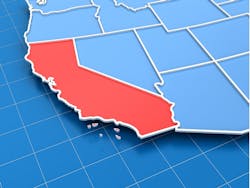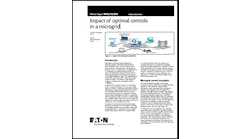Microgrids can help solve important challenges right now in California, but development has been slowed by the COVID-19 crisis, regulatory uncertainty and questions about the role of utilities, among other issues.
“We’re not moving fast enough. We’re not building as many distributed energy resources (DER) and microgids as we should. We need to do it better and faster,” said Tim Hade, co-founder and chief operating officer of Scale Microgrid Solutions.
One of the state’s challenges is an outdated grid that needs to be greened in order to meet the state’s climate goals. The goal is to reduce greenhouse gas emissions to 40% below 1990 levels by 2030.
Join us for “Navigating Dual Disasters: What are the Next Steps for California as it Emerges Out of Covid-19 and into Wildfire Season?” June 3 at the free Microgrid Knowledge Virtual Conference.
In addition, the state is grappling with an increasing number of public safety power shutoffs designed to prevent utility equipment from sparking wildfires.
Given the state’s climate goals and the need to create microgrids that can island for many days, the state needs to provide guidance on the role of fossil fuel generation in microgrids. And utilities’ role in facilitating microgrid deployment needs to be addressed. Should they design, implement or manage microgrids? And how can they speed interconnection?
Just as important, it’s critical to look at how to increase development of microgrids equitably. Right now, wealthy residents and Fortune 500 companies are taking advantage of microgrids. How can the rest of the population access the technology?
Progress pushing microgrids forward in California began in earnest in 2019, with a proceeding aimed at supporting microgrid development. Many people in the state saw resilience as a critical priority. But then the COVID-19 crisis erupted, and attention turned to the crisis. This made an already challenging situation — understanding how to develop more microgrids and DER — even more challenging.
First Covid-19, Next Wildfire Season
Now, the state is heading into fire season, and California is experiencing a drought that’s expected to increase the risk of wildfires.
With utilities cutting off power to prevent equipment from sparking wildfires, people’s lives are on the line.
For example, during shutoffs, customers can lose all the food in their refrigerators, a particularly onerous event for households stuggling economically as a result of the COVID-19 crisis.
A lot of organizations have been working hard to educate the state and cities about which types of microgrid solutions can help during public safety power shutoffs.
“This technology is ready for prime time,” said Hade. “Most everyone agrees that microgrids and DER are part of the solution, but there’s little agreement about how to go about massively deploying them,” he said.








